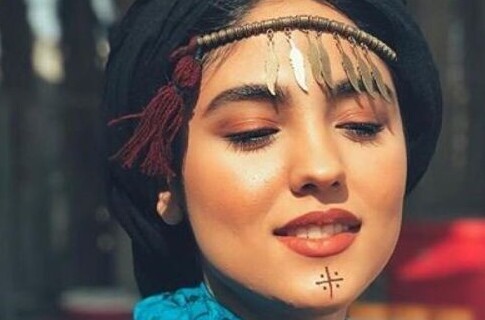SAEDNEWS: Explore the vibrant and diverse world of traditional clothing in Iran, a reflection of the country’s rich heritage and cultural identity. From historical roots to modern adaptations, Iranian attire showcases a unique blend of artistry, symbolism, and regional diversity, making it a fascinating topic for cultural enthusiasts.

According to SAEDNEWS, The traditional clothing of Iran holds immense significance within the country's rich and diverse culture. With a history spanning thousands of years, Iranian attire represents a unique amalgamation of tradition, artistry, and regional diversity. By delving into the vibrant tapestry of traditional clothing in Iran, we gain insight into the values and heritage cherished by its people.

Iran's traditional clothing illustrates the profound historical influences that have shaped its identity. Ancient civilizations such as the Elamites, Medes, and Achaemenids laid the groundwork for Iranian clothing, with the Achaemenid Empire introducing luxurious and elaborately designed garments. Subsequent dynasties, including the Parthians and Sassanids, enriched these styles with intricate patterns and vibrant colors.
With the advent of Islam in the 7th century, Iranian clothing underwent significant transformations, blending Islamic influences with pre-existing Persian traditions. This evolution gave rise to garments like the chador and hijab for women and the Jubba for men, emphasizing modesty while celebrating Iranian craftsmanship.

Traditional male attire showcases both elegance and cultural symbolism. The "Qameh," a long tunic-like shirt, is typically made from natural fibers and paired with "Shalvar," loose-fitting trousers. For colder climates, men may wear "Shaliteh," a thicker version of Shalvar.
The "Jubba" is a prominent outer garment characterized by its lavish fabric and intricate embroidery. Men's headwear, including the "Kolah," reflects regional identity and social status. Earthy tones and vibrant colors convey various meanings, emphasizing connections to nature and the festivities of life.

Iranian women’s clothing is equally diverse, encapsulating the rich cultural tapestry of the nation. Iconic garments include the "chador," a full-body cloak, and the "Manteau," a knee-length coat worn over a blouse. The choice of fabrics and designs allows women to express individuality while adhering to cultural norms.
Regional differences are pronounced, with women in northern Iran often wearing long, colorful dresses while those in the south embrace embroidered blouses and skirts. The diversity of styles reflects geographical influences and local customs, creating a fascinating mosaic of fashion across the country.
The distinct regions of Iran showcase their unique clothing styles influenced by climate, geography, and cultural traditions. In Tehran, traditional attire merges with modern trends, while Shiraz emphasizes lightweight, colorful designs suitable for its hot climate. Contrastingly, Tabriz features more layered garments, designed for the colder temperatures typical of the northwest.

No traditional outfit is complete without accessories that enhance the overall ensemble. Jewelry, such as finely crafted necklaces and bracelets, plays an essential role in Iranian culture. Traditional belts known as "Kamarband" provide both function and elegance, while scarves ("Rousari") allow for personal expression. Footwear, like "Giveh," handmade shoes, complements the garments while reflecting the artistry of Iranian craftsmanship.
In festive and ceremonial contexts, traditional clothing takes center stage. Weddings are adorned with elaborate attire that reflects cultural pride, while festivals spark a celebration of vibrant colors and patterns. During religious events, modesty prevails, reinforcing the significance of attire in expressing cultural identity and values.
Western influences have led to modern adaptations of Iranian clothing, resulting in a unique fusion of traditional and contemporary styles. Today's designers creatively infuse traditional motifs and techniques into modern pieces, appealing to both local and global markets.
Furthermore, there is a movement toward sustainability in fashion, prompting a revival of traditional textiles, eco-friendly practices, and a focus on authentic craftsmanship. These contemporary trends are helping preserve Iran's rich heritage while ensuring its relevance in a rapidly changing world.
The traditional clothing of Iran embodies a rich cultural heritage that reflects the nation's history, artistry, and regional identities. From ancient civilizations to modern adaptations, Iranian attire showcases the enduring beauty and significance of clothing as a form of cultural expression. By embracing and preserving this legacy, we connect with the essence of Iranian culture and appreciate the intricate tapestry of its traditional clothing. Through fashion, we honor the past while fostering a vibrant future that celebrates diversity and cultural pride.

